Ditapis dengan
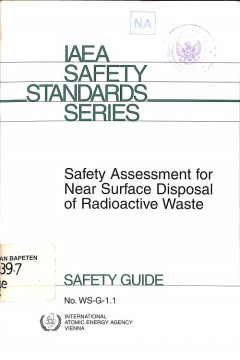
Safety Assessment for Near Surface Disposal of Radioactive Waste
This Safety Guide provides recommendations on how to meet the requirements related to safety assessment in the Safety Requirements publication, Safety Standards Series No. WS-R-1, Near Surface Disposal of Radioactive Waste. It addresses the subject of safety assessment for near surface disposal of radioactive waste and provides guidance on approaches to performing safety assessments in the cont…
- Edisi
- -
- ISBN/ISSN
- 9201012993 / 1020525X
- Deskripsi Fisik
- 31 p. : Illus. ; 24 cm
- Judul Seri
- Safety Standards Series No. WS-G-1.1
- No. Panggil
- 621.0397 IAE s
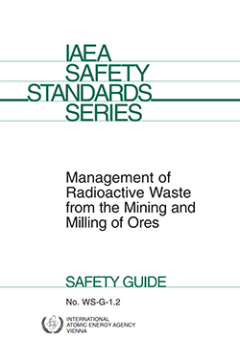
Management of Radioactive Waste from the Mining and Milling of Ores, Safety G…
This Safety Guide provides recommendations and guidance on the safe management of radioactive waste resulting from the mining and milling of ores, with the purpose of protecting workers, the public and the environment from the consequences of these activities. It supplements Safety Standards Series No. WS-R-1, Near Surface Disposal of Radioactive Waste.
- Edisi
- -
- ISBN/ISSN
- 9201158025 / 1020525X
- Deskripsi Fisik
- 39 p. : Illus. ; 24 cm
- Judul Seri
- Safety Standards Series No. WS-G-1.2
- No. Panggil
- -
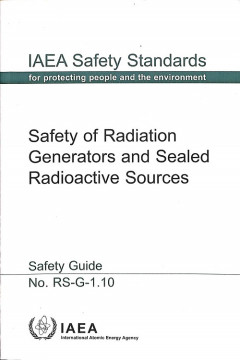
Safety of Radiation Generators and Sealed Radioactive Sources, Safety Guide
The objective of this Safety Guide is to assist Member States in implementing regulatory requirements for radiation sources that will ensure their safety. To that end, this publication provides guidance on infrastructure responsibilities for safety, on methodologies for performing safety assessments and on specific design and operational measures that should be taken to ensure safety throughout…
- Edisi
- -
- ISBN/ISSN
- 9201075065 / 1020525X
- Deskripsi Fisik
- 59 p. : Illus. ; 24 cm
- Judul Seri
- Safety Standards Series No. RS-G-1.10
- No. Panggil
- -
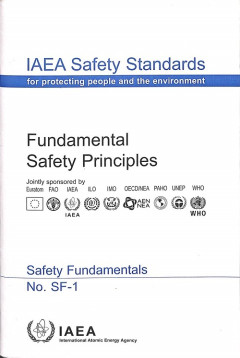
Fundamental Safety Principles, Safety Fundamentals
This publication states the fundamental safety objective and ten associated safety principles, and briefly describes their intent and purpose. The fundamental safety objective — to protect people and the environment from harmful effects of ionizing radiation — applies to all circumstances that give rise to radiation risks. The safety principles are applicable, as relevant, throughout the en…
- Edisi
- -
- ISBN/ISSN
- 9201107064 / 1020525X
- Deskripsi Fisik
- 21 p. : Illus. ; 24 cm
- Judul Seri
- Safety Standards Series No. SF-1
- No. Panggil
- -
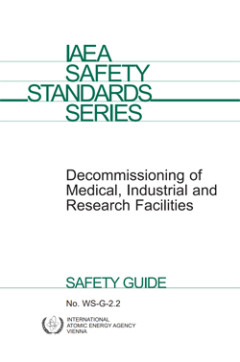
Decommissioning of Medical, Industrial and Research Facilities, Safety Guide
This Safety Guide addresses the subject of how to meet the requirements for the decommissioning of medical, industrial and research facilities where radioactive materials and sources are produced, received, used and stored. It provides guidance to national authorities and operating organizations, particularly to those in developing countries (as such facilities are predominant in these countrie…
- Edisi
- -
- ISBN/ISSN
- 9201020886 / 1020525X
- Deskripsi Fisik
- 37 p. : Illus. ; 24 cm
- Judul Seri
- Safety Standards Series No. WS-G-2.2
- No. Panggil
- 362.1 IAE d
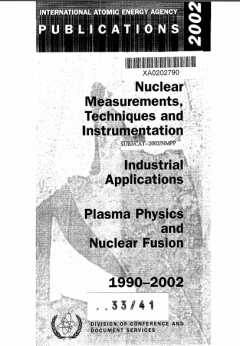
Nuclear Measurements, Techniques and Instrumentation, Industrial Applications…
The purpose of this series of annually published volumes of which the earlier issues were supplements to the Nuclear Fusion journal is to publish original contributions and review articles containing high quality data on the atomic and plasma-material interaction processes of interest to thermonuclear fusion research. The scientific scope of the series includes the topics of elementary ato…
- Edisi
- -
- ISBN/ISSN
- -
- Deskripsi Fisik
- -
- Judul Seri
- -
- No. Panggil
- -
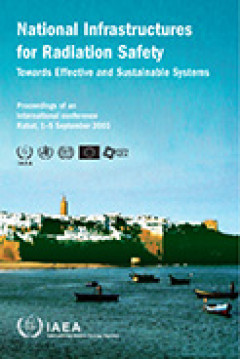
National Infrastructures for Radiaton Safety Towards Effective and Sustainabl…
This conference reviewed the overall situation with respect to the development of radiation safety and security infrastructures both in IAEA Member States and in countries that are not IAEA Member States. It highlighted the need for complete and effective radiation safety and security infrastructures that are sustainable. The conference findings and recommendations are included in these proceed…
- Edisi
- -
- ISBN/ISSN
- -
- Deskripsi Fisik
- -
- Judul Seri
- -
- No. Panggil
- CD0390
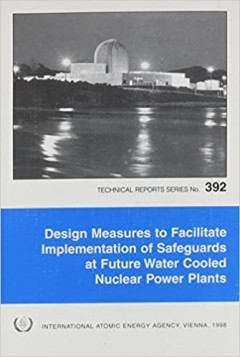
Design Measures to FacilitateImplementation of Safeguards at Future Water Coo…
This report presents guidelines to the designers of water cooled power reactors which will minimize the impact of IAEA safeguards on plant operations and ensure efficient and effective acquisition of safeguards data to the mutual benefit of the Member State, the plant operator and the IAEA. These guidelines incorporate the IAEA's experience in establishing and carrying out safeguards at current…
- Edisi
- -
- ISBN/ISSN
- 9201047983 / 0074-1014
- Deskripsi Fisik
- 94 p. : illus. ; 24 cm
- Judul Seri
- Technical Reports Series No. 392
- No. Panggil
- -
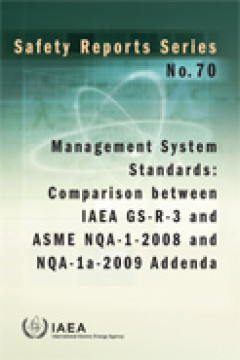
MANAGEMENT SYSTEM STANDARDS: COMPARISON BETWEEN IAEA GS-R-3 AND ASME NQA-1-20…
This Safety Report compares the requirements of IAEA Safety Standards Series No. GS-R-3, The Management System for Facilities and Activities, and the American Society of Mechanical Engineers (ASME) Quality Assurance Requirements for Nuclear Facility Applications (ASME NQA-1-2008, NQA-1a-2009). It identifies the similarities and differences between them and provides information and guidance to a…
- Edisi
- -
- ISBN/ISSN
- 9789201208101
- Deskripsi Fisik
- 76 pages, 24 cm
- Judul Seri
- Safety Reports Series 70
- No. Panggil
- -
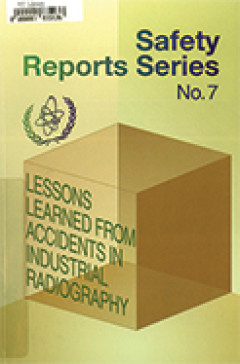
Lesson Learned from Accidents in Industrial Radiography
This Safety Report contains the findings of extensive research in terms of the lessons that can be learned from accidents which have occurred in industrial radiography, both in developed and developing countries. The review was carried out by a team of regulatory authorities, manufacturers and safety advisers. The objectives were to draw lessons from the initiating events of the accidents, the …
- Edisi
- -
- ISBN/ISSN
- -
- Deskripsi Fisik
- -
- Judul Seri
- Safety Reports Series No. 7
- No. Panggil
- -
 Karya Umum
Karya Umum  Filsafat
Filsafat  Agama
Agama  Ilmu-ilmu Sosial
Ilmu-ilmu Sosial  Bahasa
Bahasa  Ilmu-ilmu Murni
Ilmu-ilmu Murni  Ilmu-ilmu Terapan
Ilmu-ilmu Terapan  Kesenian, Hiburan, dan Olahraga
Kesenian, Hiburan, dan Olahraga  Kesusastraan
Kesusastraan  Geografi dan Sejarah
Geografi dan Sejarah